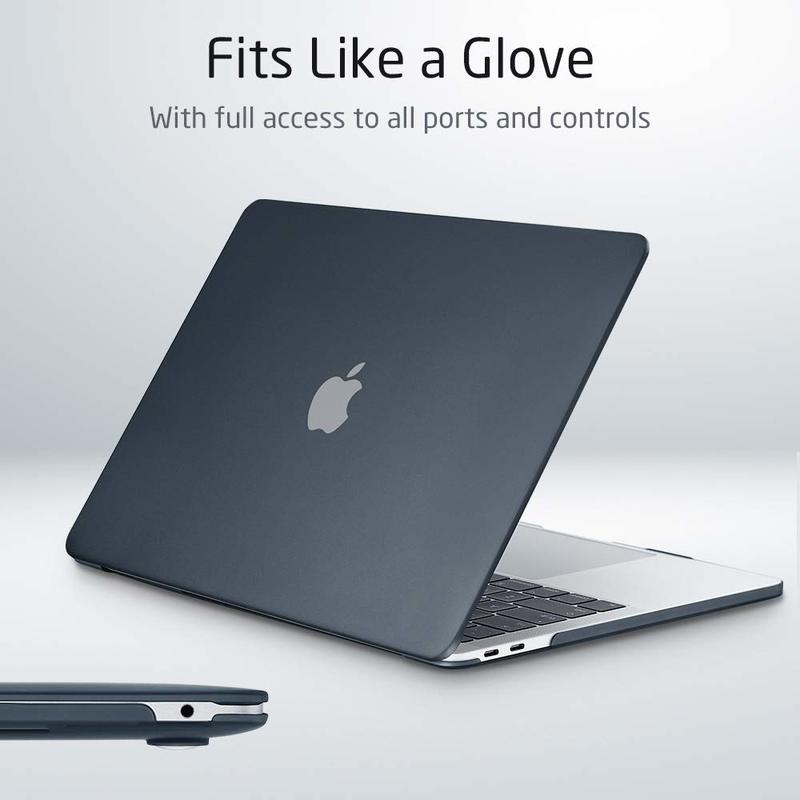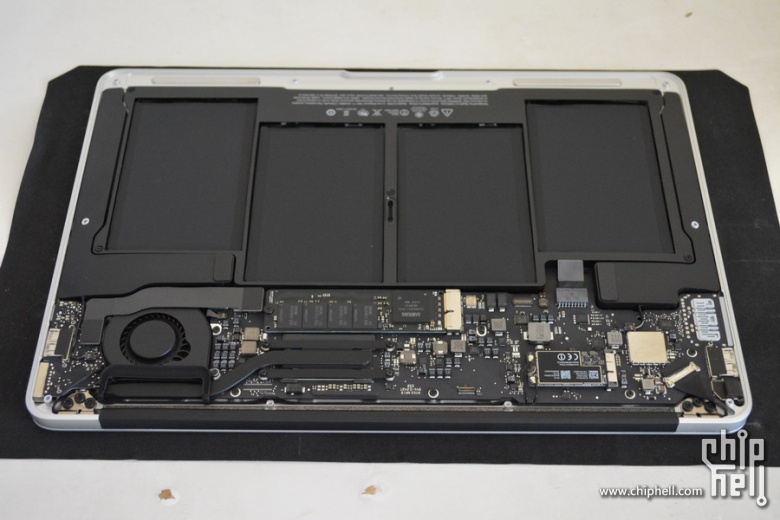Apple is always working on improving your security, and each macOS update brings new privacy features. In particular, macOS Catalina offers better control of your data. It requires apps to get your approval before accessing the camera and microphone on your Mac. Every time you open the application for the first time, you'll need to permit it to use your computer's camera.
Sorry to be the bearer of bad news, but Access is not available on the Mac. It is in the PC edition only. I do not know if there is a Windows emulator available for the MacBook Air that would work. Your MacBook Air comes with 90 days of complimentary technical support and a one-year limited warranty. Purchase AppleCare+ for Mac to extend your coverage to three years from your AppleCare+ purchase date and add up to two incidents of accidental damage coverage, each subject to a service fee of $99 for screen damage or external enclosure damage, or $299 for other repairable damage, plus. Can i connect apple watch to macbook. Publisher, Access, Visio, OneNote, FrontPage and Groove do not exist for the Mac. There are Mac programs that will let you do the same things, and in some cases, they can import your Microsoft files. Another option is to run 'Office for Windows' programs in Parallels/VMware the Mac. More info: Office for Mac and Microsoft Access for Windows. To turn on Find My Mac, open System Preferences, click Apple ID iCloud, then select Find My Mac. See the Apple Support article If your Mac is lost or stolen. Note: If your MacBook Air has multiple user accounts, only one can have Find My Mac turned on.
Below we'll show you how to give camera access for any installed app. Also, you'll learn how to limit access for programs you suspect might be recording videos without your knowledge. Let's dive in!
Securing your camera and microphone
By default, the latest macOS versions — macOS Mojave and macOS Catalina — prevent apps from getting your personal data without your permission. That's why when you open the program that wants to access your hardware, you'll receive a pop-up. To give access, you just have to click OK. If this is a reliable app from a legitimate developer, you'll need to confirm once and never think about it again.
If you clicked 'Don't Allow,' you could easily change that later on your Mac. You can check what apps are allowed to use your camera and allow or block access at any time. And here's how to do that.
How to manage your camera permissions

Microsoft Access Macbook
Now let's see a few ways that allow the apps to access your camera. If you're looking for a simple automated solution, jump straight to the last method.
#1: Use System Preferences
Follow these steps to give some apps access to your camera:
- Go to the Apple menu.
- Choose System Preferences.
- Click Security & Privacy.
- Choose Camera from the lefthand menu.
- Allow the app to access your camera by ticking the box next to it.
If the application is opened on your Mac, you'll receive a message asking you to quit it.
Click 'Quit Now' and close the System Preferences window.
#2: Use your web browser
Let's see how to enable camera permissions via Google Chrome.
- Open Chrome.
- Go to the Chrome menu > Preferences.
- Choose Advanced > Privacy & Security.
- Under Privacy and security, click Site Settings.
- Choose Camera.
- Click Ask before accessing and adjust the setting to your liking.
The process is similar for all web browsers, so if you're using Safari or Firefox, you shouldn't have problems with finding camera permissions settings.
#3: Use Parental Controls
The parental control feature on Mac also allows you to manage your camera.
- Open System Preferences from the Apple menu.
- Choose Parental Controls.
- Click Enable Parental Controls.
- Enter your admin password if you're asked.
- Click on the Apps tab and check Allow use of camera.
If you want to block camera access, uncheck the box. This will prevent all the apps on your Mac from using the built-in cameras.
#4: Use the app CleanMyMac X
We've come to the smoothest and the most intuitive way of taking care of your app permissions — with the help of an app called CleanMyMac X.
This program has a lot of useful features, like cleaning your Mac from junk files, speeding up the system, checking your computer for viruses and malware, and much more. Recently a new feature 'Application Permissions' was released, and it allows controlling all your permissions, including your camera, in a few clicks. You should check it out!
- Download CleanMyMac X (a free trial version is available).
- Launch the app.
- Go to the Privacy tab.
- Click Scan.
- Choose 'Application Permissions.'
- Check what apps have access to your camera and make changes.
Note: This feature is available only on macOS Catalina.
Once you've solved the issue with your permissions, check out other CleanMyMac's tools. We recommend you to run a Smart Scan first. It will find unneeded files, determine potential threats, and define suitable speedup tasks for your Mac.
Then feel free to try other tools in the left panel —you'll find a lot of useful tools for making your Mac as good as new.
Thanks for reading and stay tuned!
I have made a mistake using my Air, I deleted the boot record on the SSD.
The laptop is unable to start, unable to run diagnorstics, unable to run boot select, nothing, it just shows the gray background with no apple logo on it, so does not even loads the OSX. I believe it stuck in the boot process when there are two OS (OSX, SUSE) and no boot records. The system detects external USB flash drive, but it can't boot from that either.
My questions are theese:
- In order to repair and reflash the SSD from an older backup image that I have, I need an external SSD reader, which I can connect to another computer. Where can I finde such? I have been looking for it the whole day, but no reader has the same connection that apple does.
- If there is no reader to that, I can make it. Correct me if I am wrong, but the Air's SSD is a SATA, but a smaller one. Are the pinouts in the same order as in SATA? Because in this case, I just need 2 connectors and a bunch of wire..
- It would be much easier to do this process without a home-made sata reader, so I have an another idea, a riskier one: The problem is with the SSD, so why not remove it, and start a linux from an USB stick, then when the system is up, put back the SSD, and reformat it. Is it technically possible? Will the system recognise that the SSD was put back? Will it damage the mainboard?

Microsoft Access Macbook
Now let's see a few ways that allow the apps to access your camera. If you're looking for a simple automated solution, jump straight to the last method.
#1: Use System Preferences
Follow these steps to give some apps access to your camera:
- Go to the Apple menu.
- Choose System Preferences.
- Click Security & Privacy.
- Choose Camera from the lefthand menu.
- Allow the app to access your camera by ticking the box next to it.
If the application is opened on your Mac, you'll receive a message asking you to quit it.
Click 'Quit Now' and close the System Preferences window.
#2: Use your web browser
Let's see how to enable camera permissions via Google Chrome.
- Open Chrome.
- Go to the Chrome menu > Preferences.
- Choose Advanced > Privacy & Security.
- Under Privacy and security, click Site Settings.
- Choose Camera.
- Click Ask before accessing and adjust the setting to your liking.
The process is similar for all web browsers, so if you're using Safari or Firefox, you shouldn't have problems with finding camera permissions settings.
#3: Use Parental Controls
The parental control feature on Mac also allows you to manage your camera.
- Open System Preferences from the Apple menu.
- Choose Parental Controls.
- Click Enable Parental Controls.
- Enter your admin password if you're asked.
- Click on the Apps tab and check Allow use of camera.
If you want to block camera access, uncheck the box. This will prevent all the apps on your Mac from using the built-in cameras.
#4: Use the app CleanMyMac X
We've come to the smoothest and the most intuitive way of taking care of your app permissions — with the help of an app called CleanMyMac X.
This program has a lot of useful features, like cleaning your Mac from junk files, speeding up the system, checking your computer for viruses and malware, and much more. Recently a new feature 'Application Permissions' was released, and it allows controlling all your permissions, including your camera, in a few clicks. You should check it out!
- Download CleanMyMac X (a free trial version is available).
- Launch the app.
- Go to the Privacy tab.
- Click Scan.
- Choose 'Application Permissions.'
- Check what apps have access to your camera and make changes.
Note: This feature is available only on macOS Catalina.
Once you've solved the issue with your permissions, check out other CleanMyMac's tools. We recommend you to run a Smart Scan first. It will find unneeded files, determine potential threats, and define suitable speedup tasks for your Mac.
Then feel free to try other tools in the left panel —you'll find a lot of useful tools for making your Mac as good as new.
Thanks for reading and stay tuned!
I have made a mistake using my Air, I deleted the boot record on the SSD.
The laptop is unable to start, unable to run diagnorstics, unable to run boot select, nothing, it just shows the gray background with no apple logo on it, so does not even loads the OSX. I believe it stuck in the boot process when there are two OS (OSX, SUSE) and no boot records. The system detects external USB flash drive, but it can't boot from that either.
My questions are theese:
- In order to repair and reflash the SSD from an older backup image that I have, I need an external SSD reader, which I can connect to another computer. Where can I finde such? I have been looking for it the whole day, but no reader has the same connection that apple does.
- If there is no reader to that, I can make it. Correct me if I am wrong, but the Air's SSD is a SATA, but a smaller one. Are the pinouts in the same order as in SATA? Because in this case, I just need 2 connectors and a bunch of wire..
- It would be much easier to do this process without a home-made sata reader, so I have an another idea, a riskier one: The problem is with the SSD, so why not remove it, and start a linux from an USB stick, then when the system is up, put back the SSD, and reformat it. Is it technically possible? Will the system recognise that the SSD was put back? Will it damage the mainboard?
So, theese are my ideas to reflash the SSD, I hope I can make it without buying a new one. If someone has better ideas I am looking forward to it too..
Thanks for every reply!
Macbook Air Macbook Pro
MacBook Air, Fixing the boot record
Posted on Jan 25, 2012 8:35 AM
